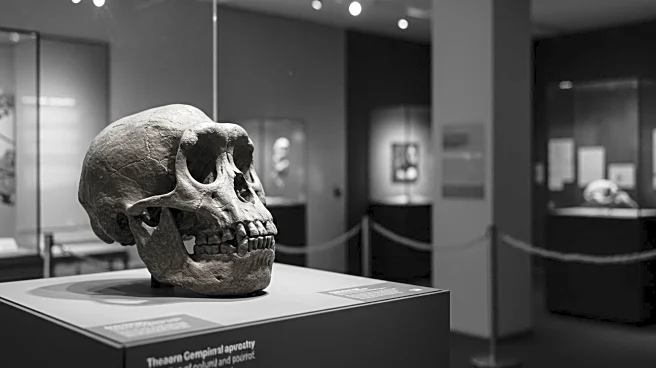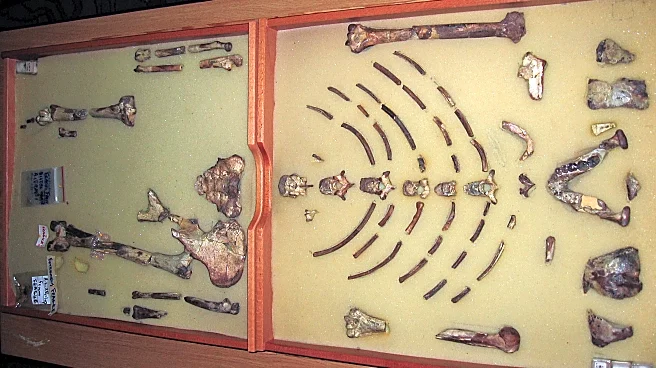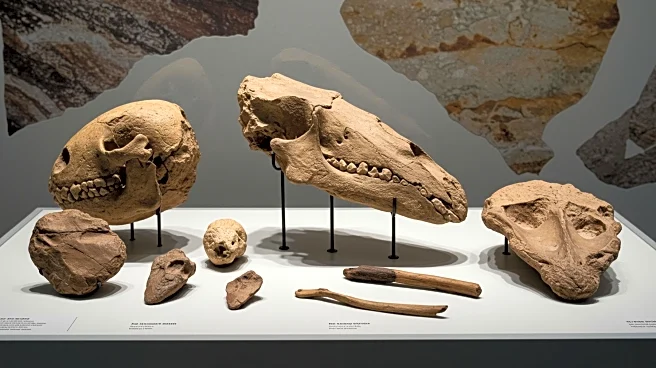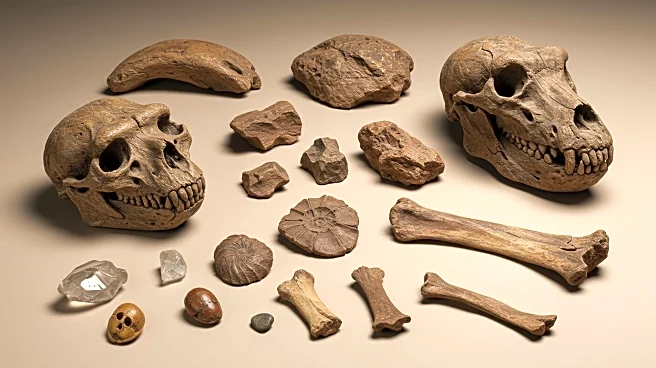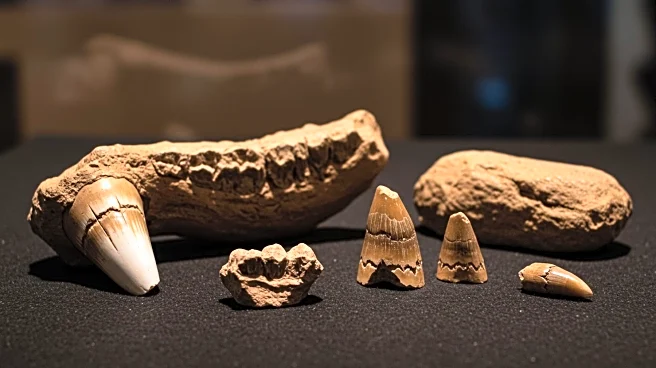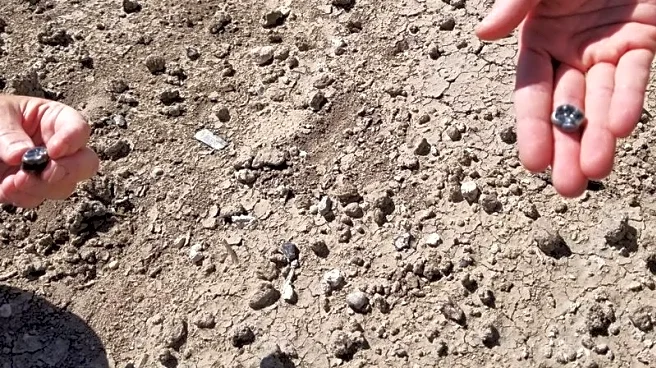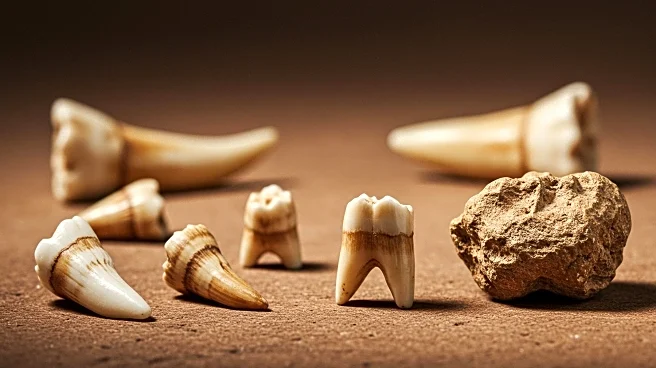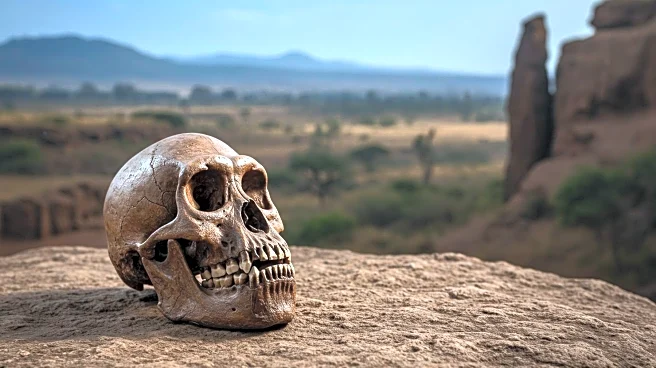What is the story about?
What's Happening?
The fossil of Lucy, a significant human ancestor, has been transported from Ethiopia to the Czech National Museum in Prague for a two-month exhibition. Lucy, an Australopithecus afarensis, was discovered in Ethiopia in 1974 and is considered an iconic specimen of early human history. This marks the second time Lucy has left Ethiopia, the first being a tour in the United States in 2013. The exhibition will also feature Selam, another Australopithecus fossil discovered in the same region. While the exhibition is seen as a unique opportunity for Europeans to view Lucy, concerns have been raised about the safety and preservation of her fragile bones during transportation.
Why It's Important?
Lucy’s exhibition in Europe is significant as it provides a rare opportunity for people outside Ethiopia to engage with a crucial piece of human evolutionary history. The fossil is a vital link in understanding human origins, and its display can enhance global appreciation and knowledge of early human species. However, the transportation of such a delicate artifact poses risks, including potential damage due to climate changes and handling during transit. The event also highlights issues of heritage management and the balance between global sharing and local ownership, as some Ethiopians feel sidelined from the narrative of their cultural heritage.
What's Next?
The exhibition in Prague is expected to draw significant attention from the scientific community and the general public, potentially leading to increased interest in human origins research. The Czech National Museum has expressed gratitude to Ethiopia for lending the fossils, which may foster further international collaborations in anthropology and archaeology. The concerns about Lucy’s preservation may prompt discussions on best practices for transporting and exhibiting fragile historical artifacts, ensuring their safety while making them accessible to a broader audience.
Beyond the Headlines
The quiet departure of Lucy from Ethiopia raises questions about transparency and public engagement in decisions regarding national heritage. Many Ethiopians were unaware of the fossil’s journey, sparking debate about the government's role in involving its citizens in cultural heritage matters. This situation underscores the ethical considerations in managing and sharing historical artifacts, balancing international interest with local pride and ownership.
AI Generated Content
Do you find this article useful?
